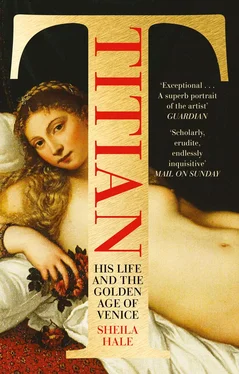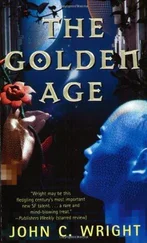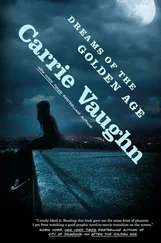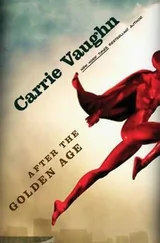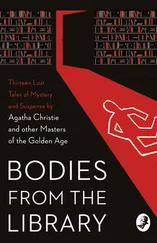A French diplomat, Philippe de Commynes, who was in Venice in 1494 as the envoy of the French king, left us with one of the most famous of the many descriptions of the city as Titian first saw it. The worldly Commynes was as amazed as any modern tourist to see ‘so many steeples, so many religious houses, and so much building, and all in the water … it is a strange sight to behold so many great and goodly Churches built in the sea’. He added:
I was conducted through the principal street, which they call the Grand Canal … It is the fairest and best-built street, I think, in the world, and goes quite through the city. The buildings are high and stately, and all of fine stone. The ancient houses are all painted, but the rest that have been built within these hundred years, have their front all of white marble … and are beautified with many great pieces of Porphire and Serpentine … In short, it is the most triumphant City that I ever saw … governed with the greatest wisdom, and serving God with the greatest solemnity.
Although encomiums of great cities were standard Renaissance rhetoric, Venice was the most described and praised of all, not least by its own propagandists. And no Renaissance city was portrayed in such detail or on such an enormous scale as Venice in a map published in 1500, which invites us to explore the streets and waterways of the city that Titian knew as a boy. The map was made by a Venetian painter and printmaker known as Jacopo de’ Barbari, ‘of the barbarians’, a name he seems to have adopted even before he started working for patrons north of the Alps. The publisher of his map, a German merchant by the name of Antonio Kolb, was not exaggerating when he boasted, in his application to the government for permission to print, of ‘the almost unattainable and incredible skill required to make such an accurate drawing’ on this enormous scale, ‘the like of which was never made before … and of the mental subtlety involved’. Printed from six blocks, which are preserved in the Correr Museum in Venice, the de’ Barbari map measures some 2.75 metres by 1.20. It is inevitably used to illustrate books about Venice, and you can buy scaled-down facsimiles in Venetian bookshops. But to enjoy this remarkable portrait of Venice on the eve of the most artistically dynamic period of its history you have to examine it in its original proportions.
The de’ Barbari map of Venice.
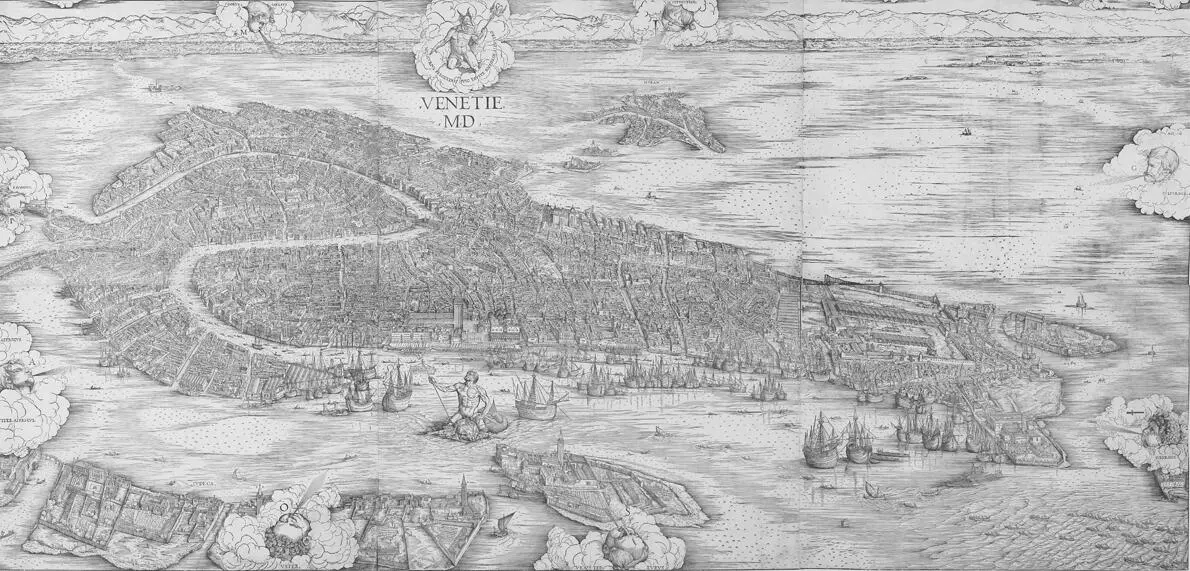
De’ Barbari imagined himself floating above the city from a fixed point to the south and several hundred metres into the sky. Nearly every building that could be seen from this perspective is recorded: houses large and small complete with windows, timber roof terraces and conical chimney pots designed to catch sparks from domestic fires; well heads in private courtyards and public campi;5 the square bricks that paved some of the larger campi; many churches facing every which way and their bell towers. It is still primarily a Gothic city, although some of the newest buildings have rounded windows, and some brick bridges have already replaced the old wooden fire hazards (although the wooden Rialto Bridge, which had been rebuilt in 1458, was not replaced with the stone bridge until after Titian’s lifetime). Around the perimeters of the city there are orchards, vineyards, long open-sided sheds for drying dyed cloth, and large monastic houses with their herb gardens.
De’ Barbari took special care with the details of the two great preaching churches, the largest in Venice and, as usual in Italian cities, at opposite ends of the city. The Franciscan Santa Maria Gloriosa dei Frari, for which Titian would paint two of his most innovative altarpieces, stands to the west of the Rialto; the Dominican Santi Giovanni e Paolo, where his Death of St Peter Martyr was his most admired and famous work before it was destroyed by fire in the nineteenth century, is on the edge of the north lagoon, with some timber yards just to the east. De’ Barbari even managed to squeeze into his drawing of the campo the equestrian monument to the mercenary soldier Bartolomeo Colleoni and the illusionist façade of the Scuola di San Marco, both completed only a few years before his map was published.
The focal point of the map is of course Piazza San Marco, the religious and political hub of the empire and the only open space in Venice that was and is called a piazza rather than a campo. The bell tower, which had been struck by lightning in 1489, has a flat top in the first edition, but a second state printed in 1514 shows the restored spire. The west end of the piazza is closed by the church of San Geminiano, replaced in the early nineteenth century by the neoclassical Napoleonic wing that now houses the Correr Museum. The clock tower framing the entrance to the Mercerie had been completed just in time for the mid-millennium, but the Procuratie Vecchie, the arcaded terrace that extends along the north side of the piazza, which was let out by the procurators as shops and offices, was rebuilt in a similar style after a fire in 1514. On the south side you can make out the jumbled roofs of the procurators’ old residences and of some hostelries of dubious reputation, which were gradually replaced by the present Procuratie Nuove from the 1540s and not completed until after Titian’s death.
Meanwhile de’ Barbari did his best to dignify the moneychangers’ booths and bakers’ shops and the web of narrow alleys that hemmed in the base of the bell tower. He cleared away from his bowdlerized portrait of the Piazza and the adjoining Piazzetta a notoriously disgusting latrine, the cheese and salami shops on the lagoon side of the old mint, the gambling tables and food stalls between the great granite columns facing the harbour, a stone-cutter’s yard, the stalls of the notaries and barber-surgeons who conducted their business under the portico of the doge’s palace; and the last of the trees and bushes, vestiges of an old monastic garden, which were cut down a few years later to make way for the three bronze flag stands in front of the basilica. Rowing boats and sailing boats of all sizes and shapes make their way up and down the Grand Canal. In the distance, towards Torcello, men in small boats are out fishing or hunting duck. On the outlying islands of Murano and Giudecca you can see the façades of the delizie, summer residences where wealthy Venetians escaped from the heat of the city centre to enjoy themselves on warm evenings. A regatta just disappearing from view on its way to the Lido ruffles the water.
Although you could still find your way around Venice with de’ Barbari’s neat black and white map, his perspective inevitably distorts the scale of some areas of the city. Nor could any map convey the strange beauty, the pungent odours and the sounds – the footsteps, the clip-clop of horses’ hooves and the shouts of merchants and gondoliers – echoing in the narrow streets, that assaulted the senses of new arrivals. The façades of palaces, frescoed in bright colours like stage sets or inlaid with precious marbles, were reflected in canals that served as open sewers – and sometimes for the disposal of human and animal corpses – their stench mixing in the humid air with the fragrant odours of spices in the markets and the musky perfumes of inviting women. The palaces had glazed windows – a luxury more common in Venice than anywhere else in Europe – which were lit up during the late-night parties for which Venice was famous by torches and by Murano chandeliers hung from gilded ceilings.
The patrician diarist Marin Sanudo tells us that house prices were 20,000 ducats downwards on the Grand Canal, but most cost between 3,000 and 10,000. Elsewhere in the city:
Читать дальше
